The installation of the passing game should compliment the running game. Terms, explanations, and calls should coincide with alert words used to install the running game. An offense should be evaluated by its output, its ability to move the football and put points on the board so, an important fact to consider when establishing a game plan, will your offensive play work against your opponents top three defenses and coverages.
The basic philosophy of the passing game is “throw to score; run to win”. The passing attack is based upon the defense’s inability to commit nine (9) defenders to cover three (3) deep zones, and six (6) underneath zones, while defending the seven (7) run gaps. Teach your quarterback to recognize what the defense is giving up, and execute the “best play” based upon the outside defensive inverts alignment. Steal yardage whenever the defensive backs are off our outside receivers by eight yards or more, and six yards or more off the inside receivers.
The passing game is built upon being able to execute: receivers must use proper technique to release off the line of scrimmage, and the quarterback must drop quickly, make the proper read and deliver the ball to to the correct receiver based upon either a progression or line of sight decision. The goal should be to complete 65% of all passes thrown. Throwing timed and possession passes allows you to move the football, control the clock and gain yardage. A pass play cannot yield negative yards or turnovers. The receivers must run good routes, finding the open area and CATCH THE FOOTBALL.
The quarterback must be able to approch the line of scrimmage the same way on every play (look left-middle-right); find the safeties (one or two), the undercover (“inverts”), the number of defenders in the front, and weakside flat defender. If throwing the football, the quarterback must look off the intended receiver; i.e., do not watch the receiver you intend to throw to until ready to deliver the ball. If running the football, the eyes must go immediately to the read key. Some additional keys for the quarterback include:
1. Identify the “Inverts” (one or two). Are they in a run or pass alignment?
2. Steal Yardage. Are there any uncovered inside receivers? Are there any soft corners?
3. Know the keys; Who is the read defender? Know the route progression or line-of-sight for each pattern.
4. Know down and distance. Determine if the defense is in a blitzing situation or alignment; i.e., can they blitz from their alignment? Throw the ball to where the blitz is coming from.
Combining The Pro, Gun, and Pistol Formations
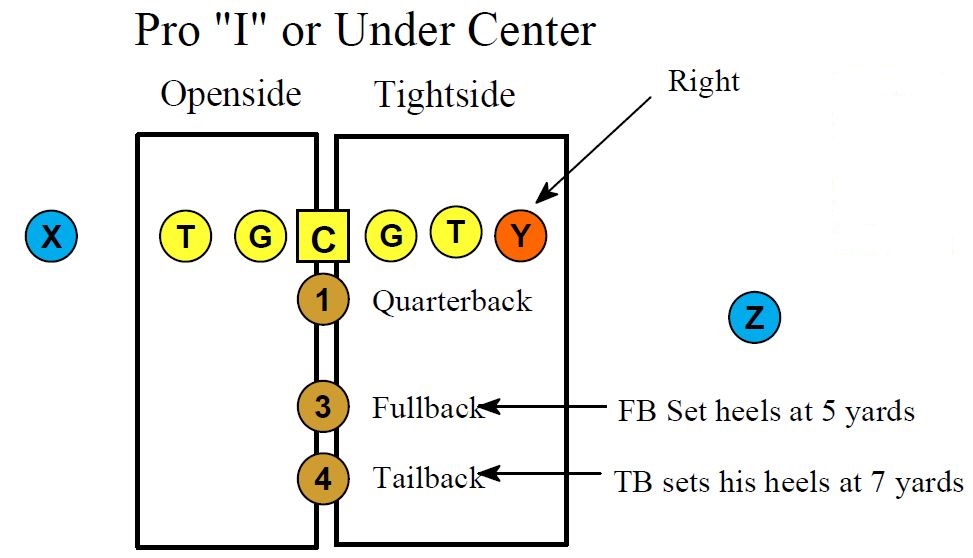
The Pro formation puts the QB underneath the center with variations of depth by the backs which, can be determined by your offensive philosophy and athletic abilities of your personnel.
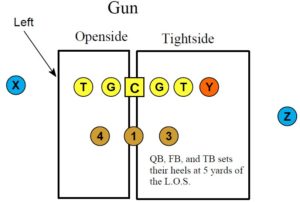
The gun offense normally puts the standard depth of the quarterback at 5 yards off the ball. The running
back depth will be determined by your athletic ability of the personnel along with your offensive philosophy for this type of an offense. When in the Gun formation whether you play with one back or two backs in the backfield your backs will offset to one side or the other along the side of the quarterback.
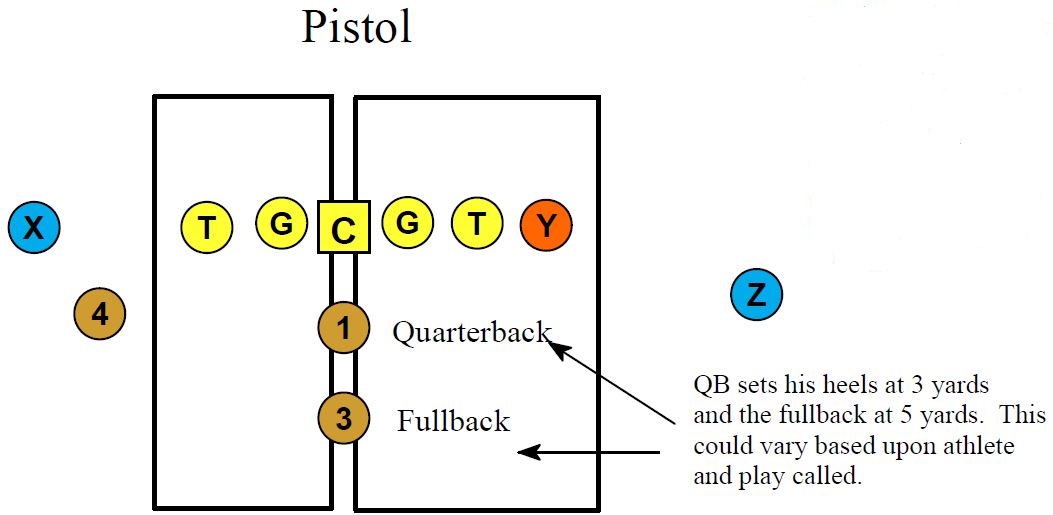
The pistol offense puts the quarterback at different levels behind the center according to the type of play being called or simply the philosophy of the offense. The Pistol offense puts one back aligned directly behind the quarterback or could be two if two backs are apart of your pistol..
Combining Depth of Pro, Gun, and Pistol Formations
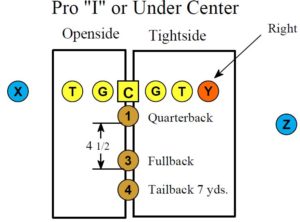
The Pro formation puts the QB underneath the center with variations of depth by the backs which, can be determined by your offensive philosophy and athletic abilities of your personnel.
Depth of the backs will vary according to your philosophy. The under center formations will basically be the same for the quarterback.
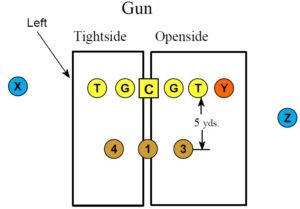
The gun offense normally puts the standard depth of the quarterback at 5 yards off the ball. The running back depth will be determined by your athletic ability of the personnel along with your offensive philosophy for this type of an
offense.
When in the Gun formation whether you play with one back or two backs in the backfield your backs will offset to one side or the other along the side of the quarterback.
The depth of the backs can vary according to what you like.
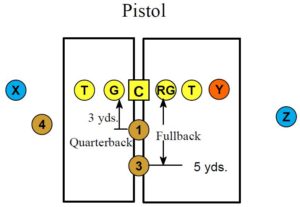
The pistol offense puts the quarterback at different levels behind the center according to the type of play being called or simply the philosophy of the offense. The Pistol offense puts one back aligned directly behind the quarterback or could be two if two backs are apart of your pistol..
Basic Formation and Play Identification
This section will help in identifying how we set formation strength and how we identify our play calling. Our method of determining which backfield set, formation, and what side we want the formation to be set is done in the following ways. The backfield set is called by the formation and the direction we set the tight end. We then follow up with the type of play we want to run and add motion if needed. An example of this would be as follows: Right 13 Inside.
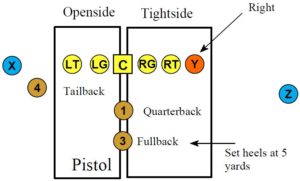
The tight end will always follow the right or left call made in the huddle. The side the tight end aligns to is known as the tightside and the side away from the tight end is known as the open side. The term “Backside” is that side away from the play being called in the huddle.a
The Z and X receivers will align according to the type of formation called. The Z receiver will follow the
Right or Left call with the X receiver always aligning opposite unless a formation call puts the “Z” and “X” on the same side.
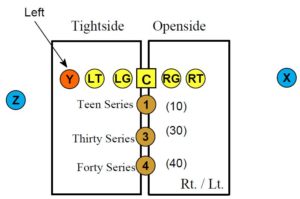
The running game is broken down into series, with each series determining the type of footwork and how the quarterback will open up on the snap of the ball.
The Teen Series pertains to the option game. The teen series can be run from either the gun, pistol or from under the center. The teen series involves the quarterback being apart of the play with the option of keeping, giving, or pitching the football.
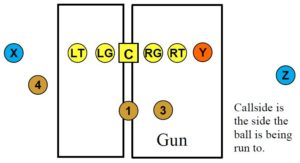
The Thirty Series requires the quarterback to reverse out, also known as a belly action.
Forty Series plays is fronted out by the quarterback and requires a 45 degree initial open step towards the play called. The forty series plays puts the ball in the hands of the tailback.
With any one back formation the fullback will remain in the backfield.